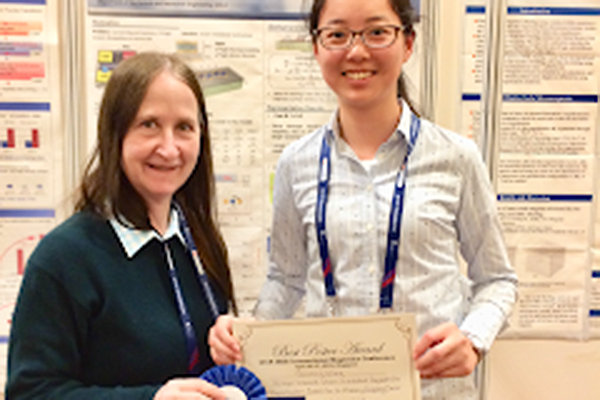By Michelle Schwartz
TANMS is proud to recognize TANMS Graduate Student, Qianchang Wang, for winning Best Poster Award at the 2018 IEEE International Magnetics Conference in Signapore. Qianchang is a fourth year Ph.D. candidate under Professor Gregory Carman in the UCLA Department of Mechanical and Aerospace Engineering. Her research focuses on modeling multiferroic systems coupled with spin-orbit torque using finite element method, with applications in magnetic memory and logic. This work numerically demonstrates the ultra energy efficiency of multiferroic control of a nanoscale magnetic memory bit. The energy consumption is as low as 22 aJ per flip for a Terfenol-D disk, which is 3-4 orders more energy efficient than current-based control mechanisms.
[The following is the title/abstract of the paper that was presented at the 2018 Intermag Conference]
Voltage Induced Strain-mediated Perpendicular Magnetization Control for In-memory Computing Device
ABSTRACT: Magnetic memory has attracted substantial attention due to its promise of high energy efficiency combined with non-volatility. Conventionally, the magnetization is controlled by spin-transfer torque (STT) current but ohmic heating makes the current-based switching mechanisms energy inefficient (100fJ/flip). In contrast, strain-mediated multiferroic composites (i.e. coupled magnetoelastic and piezoelectric thin films) provide ultra-high energy efficiency as high as 100aJ/flip due to negligible induced current during the switching process. In this study, a fully coupled model is used to simulate strain-mediated magnetization control of nanodots with perpendicular magnetic anisotropy (PMA) on a PZT (Pby[ZrxTi1-x]O3) thin film. This model is also used to study Bennet clocking of nanodot arrays.

